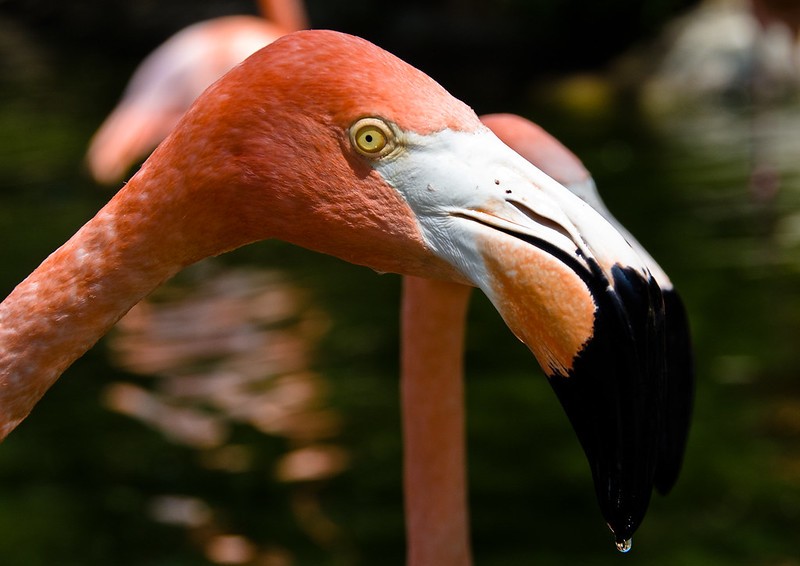
Birds of a feather really do flock together according to a new study that found flamingos with similar personality traits “form cliques” with like-minded friends.
In Chilean and Caribbean flamingos, birds with similar personality traits tended to form cliques separate from differently-wired peers, much like humans.
For example, bolder birds were shown to stick together, whilst more submissive flamingos formed another group.
It’s hoped that the research, conducted by experts at the University of Exeter and the Wildfowl & Wetlands Trust (WWT), will help us better understand the evolution of social behaviour in birds and improve the welfare of zoo flamingos in particular the famous pink birds are actually found very sparsely throughout the world.
To conduct the research, scientists observed captive Chilean and Caribbean flamingos at wetland and wildlife reserve WWT Slimbridge, between Bristol and Gloucestershire in the southwest of England.
The two species can be distinguished by their colour differences: Caribbean flamingos display a brighter crimson or vermilion colour, whilst Chilean flamingos are instead a pale pink.
The personalities of each of the flamingos were first assessed by measuring consistent individual differences such as a bird’s aggression or willingness to explore.
SIMILAR SCIENCE: Birds Have Self Control Just Like Humans–And Some Have a Lot of It
“Our previous research has shown that individual flamingos have particular friends within the flock,” said Dr. Paul Rose, a Research Associate at WWT. “In this study, we wanted to find out whether individual character traits explain why these friendships form. The answer is yes: birds of a feather flock together.”

“Like humans, flamingos appear to carve out different roles in society based on their personality,” said Fionnuala McCully, a research student at Exeter who helped gather the data. “For example, we observed groups of aggressive birds which attempt to dominate rivals and tend to get into more fights.”
“Meanwhile, the role of submissive birds may be more complex than simply being lower down the pecking order—they may be using a different approach to get what they need.”
While both species formed their own cliques, it was only among Caribbean flamingos where birds with a certain personality type had particular roles within their flock. The same evidence was not found in Chilean flamingos.
MORE ANIMAL INTELLIGENCE: Clever Cockatoos Craft 3-Piece Tool Set to Extract Fruit – Becoming Only 4th Animal Species to Do So
Though the reasons for this are at present unclear, further studies like this could shed light on such patterns.
“Our findings need further investigation, both to help us understand the evolution of social behaviour and to improve the welfare of zoo animals,” said Dr. Rose.
“But it is clear from this research that a flamingo’s social life is much more complicated than we first realised.”
SHARE These Surprisingly Social Animals With Your Own Clique…



















